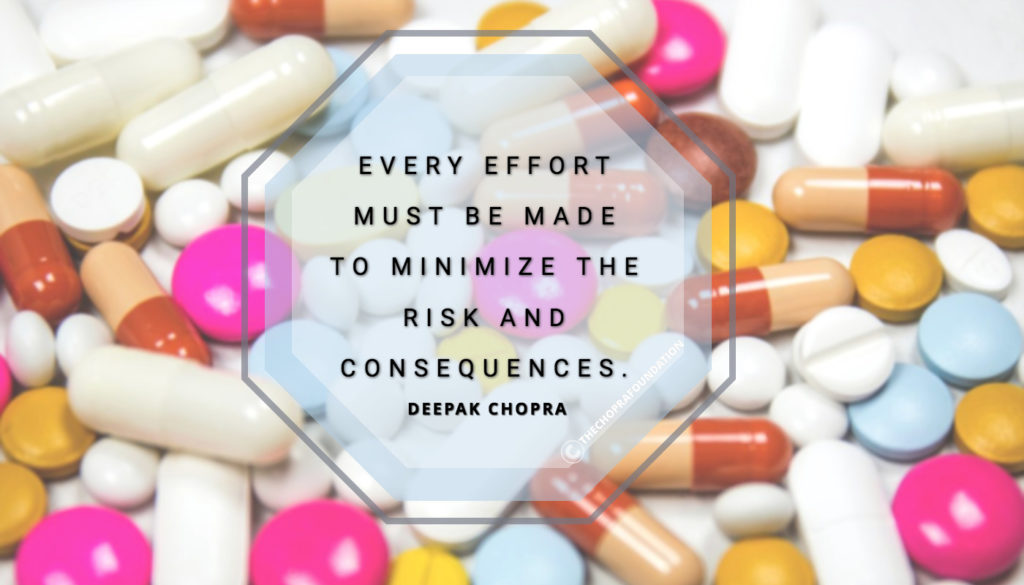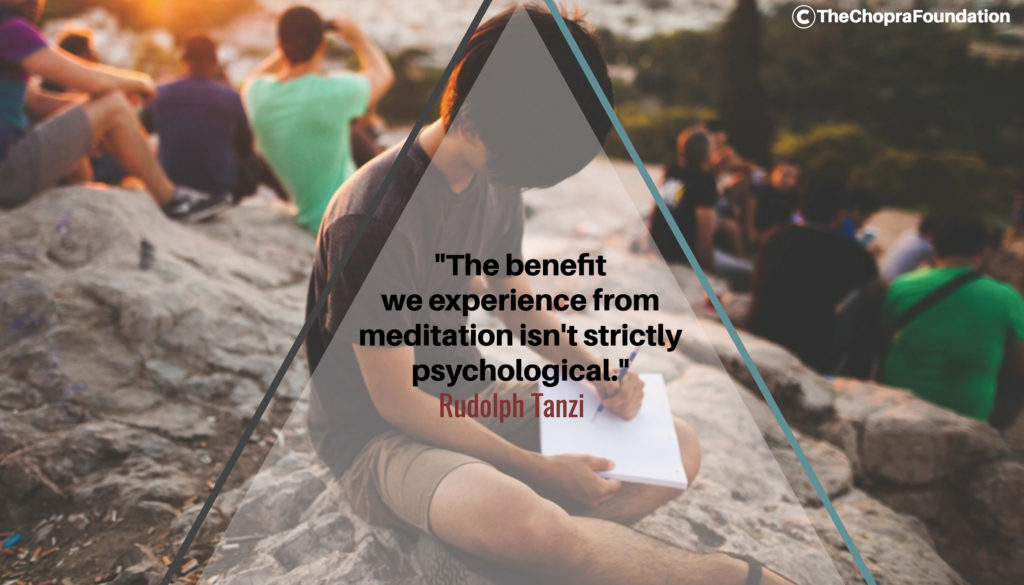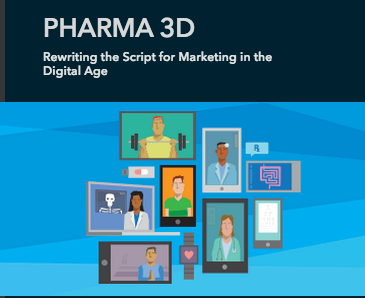By Deepak Chopra MD, Nancy S. Cetel, MD, Danielle Weiss, MD, Joseph B. Weiss, MD
Medical mistakes are a touchy subject in the medical community. Both sides of the healthcare system fear them—patients because of their general anxiety about going to the doctor, physicians because of the looming threat of malpractice. The situation needs to be faced squarely, with candor and above all, with reliable statistics. These have varied widely over the years. While the numbers of fatalities reported annually in US hospitals has had estimates from 44,000 to 440,000, even the lower estimate is a public health catastrophe.
We say this against the background of the vulnerable position even the best cared for patient faces. Entering the hospital represents a loss of freedom, exposure to anxiety-producing procedures, a sterile environment, and being handled, physically and emotionally, by strangers. Adding medical mistakes to the list must become unacceptable.
At present, however, preventable mistakes continue to persist and are often more grave. Several publications over the past two dozen years, including our own, have highlighted the alarming frequency and consequences of adverse events during medical treatment. Among the most credibly researched and analyzed findings are the following:
* The US Department of Health & Human Services, Office of the Inspector General, reported that a review of in-patient records from 2008 confirmed 180,000 fatalities occurred in the Medicare population alone, because of medical errors.
* A 2013 evidence-based estimate, using a weighted average of 4 databases, suggested that the current range of annual deaths in US hospitals from adverse events was between 210,000 to over 400,000.
* Most recently, in 2015, journal authors from Johns Hopkins estimates the number as over 250,000 deaths per year, making hospital errors the third leading cause of US hospital deaths after heart disease and cancer.

Regarding the last citation, Dr. Martin Makary, Professor of Surgery and Health Policy at the Johns Hopkins School of Medicine, comments that medical care gone wrong is commonly due to “a communications breakdown, poorly coordinated care, or a misdiagnosis,” but these are rarely mentioned when a doctor fills out “primary cause of death” on a death report.
As a result, Makary notes, “these are issues that have lived in locker rooms, doctors’ lounges, and nurses’ stations…in the form of stories and not epidemiological errors.” A recent review of 4,000 medical journal articles showed that even the most accurate medical record review protocol identified adverse events in 2.9% to 18.0% of records, with preventable errors identified in 1% to 8.6% of records. Although alarming in its own right, this number is a significant underestimation of the true frequency of errors. In a telling report that interviewed nearly 1,000 patients in Massachusetts 6 to 12 months after discharge, patients recalled three times the number of adverse events reported in the medical record.
The many reasons why errors would be underreported is all too readily apparent. Avoidance of identification, liability, blame, guilt, financial penalty, malpractice action, job security, disciplinary action, hearings, reviews, etc. are just some of the powerful motivations to avoid reporting an error. Surveys of physicians confirm the obvious, that under-reporting is widespread. Yet without accurate statistics the full extent of the endemic problem, as well as the ability to monitor efforts to reduce errors, cannot be accurately assessed. Human error is inevitable, but every effort must be made to minimize the risk and consequences.
Deepak Chopra MD, FACP, Clinical Professor of Medicine, University of California, San Diego, Chairman and Founder, The Chopra Foundation, Co-Founder, The Chopra Center for Wellbeing
Nancy S. Cetel, MD, President and Founder, Speaking of Health and specialist in women’s health and reproductive endocrinology.
Danielle Weiss, MD, Clinical Assistant Professor of Medicine, University of California, San Diego, Medical Director & Founder, Center for Hormonal Health & Well-Being
Joseph B. Weiss, MD, FACP, Clinical Professor of Medicine, University of California San Diego.
References:
Brennan TA, Leape LL, Laird NM, et al. Incidence of adverse events and negligence in hospitalized patients. Results of the Harvard Medical Practice Study I. N Engl J Med 1991;324:370–6.
Kohn LT, Corrigan J, Donaldson MS. To err is human: building a safer health system. Washington DC: National Academy Press, 2000.
Department of Health and Human Services. Adverse events in hospitals: national incidence among Medicare beneficiaries. 2010. http://oig.hhs.gov/oei/reports/oei-06-09-00090.pdf.
A New, Evidence-based Estimate of Patient Harms Associated with Hospital Care James, John T. PhD Journal of Patient Safety: September 2013 – Volume 9 – Issue 3 – p 122–128
doi: 10.1097/PTS.0b013e3182948a69
Makary MA, Daniel M. Medical error-the third leading cause of death in the US. BMJ 2016;353:i2139. doi:10.1136/bmj.i2139
Measurement of patient safety: a systematic review of the reliability and validity of adverse event detection with record review. Mirelle Hanskamp-Sebregts, Marieke Zegers, Charles Vincent, Petra J van Gurp, Henrica C W de Vet, Hub Wollersheim Published 22 August, 2016 http://bmjopen.bmj.com/content/6/8/e011078.full
Weismann JS, Schneider EC, Weingart SN, et al. Comparing patient-reported hospital adverse events with medical records reviews: Do patients know something that hospitals do not? Ann Intern Med. 2008; 149: 100–108.
Overview of medical errors and adverse events. Maité Garrouste-Orgeas François Philippart, Cédric Bruel, Adeline Max, Nicolas Lau and B Misset Annals of Intensive Care 20122:2
DOI: 10.1186/2110-5820-2-2 Published 16 February 2012
Valentin A, Capuzzo M, Guidet B, Moreno R, Metnitz B, Bauer P, Metnitz P: Errors in administration of parenteral drugs in intensive care units: multinational prospective study. BMJ 2009, 338: b814. 10.1136/bmj.b814
Ridley SA, Booth SA, Thompson CM: Prescription errors in UK critical care units. Anaesthesia 2004, 59: 1193–1200. 10.1111/j.1365-2044.2004.03969.x
Garrouste-Orgeas M, Timsit JF, Vesin A, Schwebel C, Arnodo P, Lefrant JY, Souweine B, Tabah A, Charpentier J, Gontier O, et al.: Selected medical errors in the intensive care unit: results of the IATROREF study: parts I and II on behalf of the Outcomerea study group. Am J Respir Crit Care Med 2010, 181: 134–142. 10.1164/rccm.200812-1820OC
Garrouste-Orgeas M, Soufir L, Tabah A, Schwebel C, Vesin A, Adrie C, Thuong M, Timsit JF: A multifaceted program for improving quality of care in ICUs (IATROREF STUDY) on behalf of the Outcomerea study group. Critical Care Med, in press.
Overview of medical errors and adverse events. Maité Garrouste-Orgeas, François Philippart, Cédric Bruel, Adeline Max, Nicolas Lau and B Misset Annals of Intensive Care20122:2
DOI: 10.1186/2110-5820-2-2 Published 16 February 2012
Kennerly DA, Kudyakov R, da Graca B, et al. Characterization of adverse events detected in a large health care delivery system using an enhanced Global Trigger Tool over a five-year interval. Health Serv Res 2014;49:1407–25. doi:10.1111/1475-6773.12163 Google Scholar
Rutberg H, Borgstedt Risberg M, Sjodahl R, et al. Characterisations of adverse events detected in a university hospital: a 4-year study using the Global Trigger Tool method. BMJ Open 2014;4:e004879. doi:10.1136/bmjopen-2014-004879
Christiaans-Dingelhoff I, Smits M, Zwaan L, et al. To what extent are adverse events found in patient records reported by patients and healthcare professionals via complaints, claims and incident reports? BMC Health Serv Res 2011;11:49. doi:10.1186/1472-6963-11-49 [CrossRef][Medline]Google Scholar
Classen DC, Resar R, Griffin F, et al. ‘Global Trigger Tool’ shows that adverse events in hospitals may be ten times greater than previously measured. Health Aff (Millwood) 2011;30:581–9. doi:10.1377/hlthaff.2011.0190
Sari AB, Sheldon TA, Cracknell A, et al. Extent, nature and consequences of adverse events: results of a retrospective casenote review in a large NHS hospital. Qual Saf
J Health Care Finance. 2012 Fall;39(1):39-50. The economics of health care quality and medical errors. Andel C1, Davidow SL, Hollander M, Moreno DA. https://www.ncbi.nlm.nih.gov/pubmed/23155743



